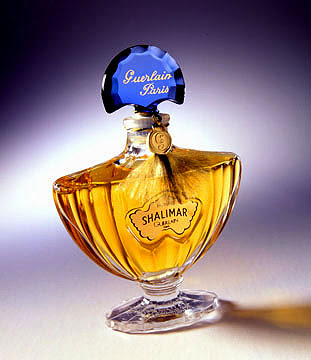Up There: Serge Lutens Ambre Sultan

I have, predictably enough, a bunch of books about perfumes and perfumery which I like read, and also to refer to when I need to know something about a scent. What is it, exactly, about fragrance that sends so many writers completely over the top? Have they spent so much time sniffing that their limbic systems are in a continual state of hyper-excitation, rendering them unable to think and write straight?
This is from the description of Serge Lutens' Ambre Sultan, from Susan Irvine's "The Perfume Guide":
Every so often a scent is launched which is supposed to smell of the odorata sexualis of a woman. This actually does. Remarkably--to some, repugnantly--it reeks of a woman's sexual juices.
Now, the last time I was within sniffing distance of a lady's private region was the day I was born, and I had other things on my mind, so I can't say I remember what it might have smelled like, but I am fairly certain that this wasn't it. If Irvine is right, when I wear Ambre Sultan, I smell either like I've just done the deed with a lady, or I am in fact a lady myself, and I'm willing to bet that neither of these things is true.
According to Irvine, the scent is composed as follows:
Top: Oregano, bay leaf, coriander, myrtle.
Middle: Angelica, patchouli.
Base: Labdanum, styrax, Tolu balsam, benzoin, sandalwood.
One of the first things off the skin is the warm glow of vanilla-scented benzoin: it sets the stage for what's to come. (And since benzoin is such a tenacious base note, you know that if you smell it at the beginning, it's probably going to be around until the end, and it is.)
You can tell from that list of notes that you're looking at a classic amber-based oriental, and you are. The top is a crisp little fusillade of herbal notes, almost immediately swamped and overcome by that benzoin, and then begins the long, slow, sighing ascent into ambergris heaven. There's a lot more than ambergris: other notes seem to appear and disappear from time to time, including a dark wisp of incense.
As do all good Oriental scents, Ambre Sultan lasts forever. Twelve hours after putting it on, I can still smell it clearly if distantly, a haze of benzoin and amber. I don't put fragrance on clothing, but I'm pretty sure that if you did, you'd still be able to smell it in a day, or two, or three.
Ambre Sultan puts me in mind, naturally, of Maître Parfumeur et Gantier's Ambre Précieux, my Holy Grail of ambergris scents and, really, of all fragrances (it's the one I would save from a fire). Ambre Sultan is more complex: it has those little filigrees and curlicues of incense and patchouli and herbs, suggesting the tracery of Islamic art. Precisely because it's so busy, I don't find it as magical as the MPG scent, which seems purer, somehow. But make no mistake: they're both spectacular.
Labels: Serge Lutens








